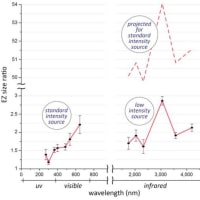Thomas Levy氏の著書に記載されている各種のウイルス・細菌に対するビタミンCの適用の記事の翻訳リストは、次のブログ記事にまとめてあります:
Thomas Levy ビタミンCによる感染症と毒物の治療の本の効果のまとめ
Levy p.180 ビタミンCの抗菌効果の幾つかのメカニズム
Thomas Levy、ビタミンCによる感染症と毒物の治療の本
Curing the Incurable: Vitamin C, Infectious Diseases, and Toxins (英語) ペーパーバック – 2011/8
治癒不可能なものを治す: ビタミンC、感染症疾患、及び毒素
Thomas E. Levy (著)
180
Some Mechanisms Of the Antimicrobial Effects Of Vitamin C
ビタミンCの抗菌効果の幾つかのメカニズム
In addition to the potent antioxidant reducing ability of vitamin C, which accounts for a great deal of its positive antimicrobial clinical effects, vitamin C has been observed to have many other positive effects as well.
ビタミンCは、強力な抗菌性の臨床効果をもたらすビタミンCの強力な抗酸化還元作用に加えて、多くの他のポジティブな効果も認められている。
Indeed, some of these positive effects on various infections may ultimately be due to the antioxidant properties of vitamin C, although this might not always be readily apparent.
確かに、様々な感染症に対するこれらのポジティブな効果の幾つかは、最終的にはビタミンCの抗酸化特性によるものかもしれませんが、これは必ずしも容易に明らかになることではないかもしれない。
However, many other anti Oxidants simply cannot accomplish what vitamin C does in the intact biological system.
しかしながら、多くの他の抗酸化物質は、人工的な手を加えられていない生物学的システムにおいてビタミンCが行っていることを、簡単には達成できない。
To dismiss vitamin C as nothing more than an antioxidant greatly understates and misrepresents the range of vitamin C's positive effects on the body.
抗酸化物質以上のものではないとしてビタミンCを低く評価することは、体に対するビタミンCのポジティブな作用の範囲を非常に過小評価し、誤った説明をすることになる。
Some of the mechanisms contributing to vitamin C's potent antimicrobial effects likely include the following (It should be noted that some of the research is on animals, which does not always allow a conclusive extrapolation to vitamin C function in humans):
ビタミンCの有力な抗菌作用に寄与するメカニズムのいくつかは、次のようなものを含む可能性がある(研究の中には、人間のビタミンC機能に決定的な外挿を常に可能にするものではない動物に関する研究があることに留意すべきである)。
- Enhancement of interferonproduction (Siegel, 1974; Siegel, 1975, Geber et al., 1975 Dahland Degre, 1976, Stone, 1980; Karpinska et al., 1982). Interferons are naturally produced antiviral glycoproteins, Interferons are produced by cells that get infected with a virus, and they subsequently increase the resistance of nearby cells to virus attack.
インターフェロン産生の増強(Siegel、1974; Siegel、1975、Geberら、1975 Dahland Degre、1976、Stone、1980; Karpinskaら、1982)。 インターフェロンは自然発生的に産生される抗ウイルス性糖タンパク質であり、インターフェロンはウイルスに感染した細胞によって産生され、その後、ウイルス攻撃に対する近隣細胞の抵抗性を増加させる。
- Enhancement of phagocytic function (Nungester and Ames, 1948; Goetzlet al., 1974; Sandler et al., 1975; Boxer et al., 1976, Ganguly et al., 1976; Anderson and Dittrich, 1979; Anderson and Theron, 1979, Boxer et al., 1979; Anderson et al., 1980, Andersonet al., 1980a; Dallegri et al, 1980; Corberand et al, 1982; Patrone et al., 1982, Cunningham Rundles, 1982, Oberritteretal, 1986; Levy and Schlaeffer, 1993; Levy et al, 1996; Ciocoliu et al, 1998; Della Fuente et al, 1998).
A phagocyte is the kind of white blood cell that ingests microorganisms and infection-related cellular debris.
貪食機能の増強(Nungester and Ames、1948; Goetzletら、1974; Sandlerら、1975; Boxerら、1976、Gangulyら、1976; AndersonおよびDittrich、1979; AndersonおよびTheron、 1979、Boxerら、1979; Andersonら、1980、Andersonet al。、1980a; Dallegriら、1980; Corberandら、1982; Patroneら、1982、Cunningham Rundles、1982、Oberritteretal、1986; Levy and Schlaeffer、1993; Levyら、1996; Ciocoliuら、1998; Della Fuenteら、1998)。
食細胞は、微生物および感染に関連する細胞破片を摂取する白血球の一種です。
- Selective concentration of vitamin C in whiteblood cells (Glickand Hosoda, 1965; Thomas and Holt, 1978; Evans et al., 1982; Goldschmidt, 1991; Washiko et al., 1993).
白血球におけるビタミンCの選択的濃度(Glickand Hosoda、1965; Thomas and Holt、1978; Evansら、1982; Goldschmidt、1991; Washikoら、1993)。
Some of the primary cells in the immune system concentrate vitamin C as much as 80 times higher than the level in plasma.
免疫系の主要な細胞の中には、血漿中のレベルよりも80倍も高いビタミンCを濃縮するものがある。
This assures extra delivery of vitamin C to the sites of infection by the migration of the vitamin C-rich white blood cells,
これは、ビタミンCが豊富な白血球の移動によって、感染部位へのビタミンCの余分な送達を保証する。
- Enhancement of cell-mediated immune response (Siegel and Morton, 1979), Cell-mediated immune response refers to the T-lymphocytes and how active they are in attacking a given infectious agent.
細胞媒介免疫応答の増強(Siegel and Morton、1979)、細胞媒介免疫応答は、Tリンパ球およびそれらが所与の感染因子をどのように攻撃するかによる。
- Enhancement of cytokineproduction by white blood cells (enget al., 1996).
Cytokines are nonantibody proteins released by certain white blood cells that serve as intercellular mediators, or agents, in the generation of an immune response.
白血球によるサイトカイン産生の増強(Enget al、1996)。
サイトカインは、免疫応答の生成において、細胞間メディエーターまたは物質として働く特定の白血球によって放出される非抗体タンパク質である。
- Inhibition of various forms of T-lymphocyte death (Campbellet al., 1999).
T-lymphocytes are an integral part of the immune system; increasing their numbers and viability strongly supports the immune system.
様々な形態のTリンパ球の死の阻害(Campbell et a。、1999)。
Tリンパ球は、免疫系の不可欠な部分である。 その数と生存能力の増加は免疫システムを強く支えている。
- Enhancement of nitric oxide production by phagocytes (Mizutanietal, 1998; Mizutani and Tsukagoshi, 1999).
Nitric oxide is produced inlarge amounts in white blood cells, and it is one of the agents that Will kill invading microorganisms.
貪食細胞による酸化窒素産生の増強(Mizutanietal、1998; Mizutani and Tsukagoshi、1999)。
白血球では一酸化窒素が多量に産生されており、侵入する微生物を殺す物質の1つである。
- Enhancement of T-lymphocyte proliferation (Fraseretal, 1980; Kennes et al., 1983, Wu et al., 2000).
Tリンパ球増殖の増強(Fraseretal、1980; Kennesら、1983、Wuら、2000)。
- Enhancement of B-lymphocyte proliferation (Schwager and Schulze, 1997).
Bリンパ球増殖の増強(Schwager and Schulze、1997)。
- Inhibition of neuraminidase (Rotman, 1978).
Some pathogenic viruses and bacteria utilize the enzyme neuraminidase to keep from being trapped in mucus, one of the natural lines of defense.
By inhibiting neuraminidase, vitamin C helps the host optimize this defensive mechanism.
ノイラミニダーゼの阻害(Rotman、1978)。
いくつかの病原性ウイルスおよび細菌は、酵素ノイラミニダーゼを利用して、防御の自然な系統の1つである粘液に閉じ込められないようにする。
ノイラミニダーゼを阻害することにより、ビタミンCはこの防御メカニズムを最適化する。
- Enhancement of antibody production and complement activity (Ecker and Pillemer, 1940, Bourne, 1949; Prinzet al., 1977, Wallance, 1977, Sakamotoetal, 1980, Feigenetal, 1982; Li and Lovell, 1985; Wahli et al., 1986; Johnston etal, 1987, Haskelland Johnston, 1991; Wu et al., 2000).
Good antibody function is important to combat both infections and toxins.
The complement system is a complex group of proteins that interact to kill targeted cells and mediate other functions of the immune system.
抗体産生および補体活性の増強(EckerおよびPillemer、1940、Bourne、1949; Prinzet al。、1977、Wallance、1977、Sakamotoetal、1980、Feigenetal、1982; LiおよびLovell、1985; Wahliら、1986; Johnston et al、1987、Haskelland Johnston、1991; Wu et al。、2000)。
優れた抗体機能は、感染と毒素の両方に対抗するために重要です。
補体系は、標的細胞を殺し、免疫系の他の機能を媒介するために相互作用する複雑なタンパク質群である。
- Enhancement of natural killer cell activity (Heuser and Wojdani, 1997).
Natural killer cells are small lymphocytes that can directly attack cells, such as tumor cells, and kill them.
This activity is not antibody-dependent.
ナチュラルキラー細胞活性の増強(Heuser and Wojdani、1997)。
ナチュラルキラー細胞は、腫瘍細胞のような細胞を直接攻撃し、それらを殺すことができる小さなリンパ球である。
この活性は抗体依存性ではない。
- Enhancement of prostaglandin formation (Horrobinet al., 1979, Scott, 1982, Siegel and Morton, 1984).
Prostaglandins are potent mediators of a variety of physiologic processes, including the regulation of T-lymphocyte function.
プロスタグランジン形成の増強(Horrobinet al、1979、Scott、1982、Siegel and Morton、1984)。
プロスタグランジンは、Tリンパ球機能の調節を含む様々な生理学的プロセスの強力なメディエーターである。
- Enhancement of cyclic GMP levels in lymphocytes (Atkinsonet al., 1979; Panushet al., 1982).
Cyclic GMP plays a central role in the regulation of different physiologic responses, including the modulation of immune responses, Cyclic GMP is important for normal cell proliferation and differentiation.
Cyclic GMP also mediates the action of many hormones, and it appears to mediate the relaxation of smooth muscle.
リンパ球における環状GMPレベルの増強(Atkinson et al、1979; Panush et al、1982)。
サイクリックGMPは、免疫応答の調節を含む種々の生理学的応答の調節において中心的な役割を果たすが、サイクリックGMPは正常な細胞増殖および分化にとって重要である。
サイクリックGMPはまた、多くのホルモンの作用を媒介し、平滑筋の弛緩を媒介するようである。
- Enhanced localized generation of and/or interaction with hydrogen peroxide, which can kill microorganisms (Strangeways, 1937; Miller, 1969; Tappel, 1973; Kraut et al, 1980).
Vitamin C and hydrogen peroxide can dissolve the protective capsules of some bacteria, such as pneumococci (Robertsonetal, 1941).
微生物を殺すことができる過酸化水素との局在的な生成および/または相互作用の増強(Strangeways、1937; Miller、1969; Tappel、1973; Krautら、1980)。
ビタミンCおよび過酸化水素は、肺炎球菌(Robertsonetal、1941)などのいくつかの細菌の保護カプセルを溶解する。
- Detoxification of histamine (Nandietal, 1974; Johnston et al., 1992).
This antihistamine effect of vitamin C is important in the support of local immune factors.
ヒスタミンの無毒化(Nandietal、1974; Johnstonら、1992)。
ビタミンCのこの抗ヒスタミン剤効果は、局所免疫因子のサポートにおいて重要である。
- Neutralization of oxidative stress further enhancing the infective process (Kastenbauer et al., 2002).
Infections can produce free radicals locally that further promote and entrench the infective process.
酸化的ストレスの中和により、感染過程がさらに促進される(Kastenbauer et al。、2002)。
感染症は局所的にフリーラジカルを産生し、感染プロセスをさらに促進し、確保することができる。
18, Nonspecific immunopotentiation and improvement of the vaccination effect (Versteeg, 1970, Banic, 1982, Wu et al., 2000).
Vitamin C Can improve the immune response achieved with vaccination.
非特異的免疫増強およびワクチン接種効果の増進(Versteeg、1970、Banic、1982、Wuら、2000)。
ビタミンCは、ワクチン接種で達成される免疫応答を増進することができます。
184
- Mucolytic effect of vitamin C (Ericsson, 1954).
This property helps liquefy thick Secretions, increasing immune access to infection.
ビタミンCの粘液溶解効果(Ericsson、1954)。
この性質は、厚い分泌物を液化させるのに役立ち、感染に対する免疫アクセスを増加させる。
- Possible alteration of bacteria cell surface qualities (Rawal, 1978).
It has been suggested that vitamin C can alter the bacteria cell surfaces to become more permeable to some antibiotics.
細菌細胞表面の性質の可能性のある変化(Rawal、1978)。
ビタミンCは、いくつかの抗生物質に対してより透過性になるように細菌細胞表面を改変することができることが示唆されている。
If you conduct your own literature search, you may find a few articles that are not supportive of the conclusions reached in the ar ticles cited above.
あなたが自分自身の文献検索を行う場合、上で引用した論文の結論を支持していないいくつかの論文を見つけることがあるかもしれません。
However, it must be stressed that the vast majority of such discrepancies are related to vitamin C dose.
しかし、そのような矛盾の大部分はビタミンCの摂取量に関連していることを強調しなければならない。
A sizeable amount of research has been performed that concludes vitamin C is not useful or important in various research models.
ビタミンCは、様々な研究モデルにおいて有用でも重要でもないと結論づけられるかなりの量の研究が行われている。
Virtually all of this research has utilized vitamin C doses that are anywhere from slightly to vastly less than what Would be required to achieve a given positive outcome or effect.
事実上、この研究のすべては、与えられた肯定的な結果または効果を達成するために必要とされるものよりもわずかに、または大幅に少ないビタミンC投与量を利用しています。
Unfortunately, many of these researchers persist in making unqualified statements that vitamin C is of little or no value in a given research application when the only really valid conclusion is that a very small dose of vitamin C had little or no value in that given research application.
残念なことに、これらの研究者の多くは、与えられた研究適用においてビタミンCの価値がほとんどまたは全くないという妥当性のない陳述を残している 。
本当に有効な唯一の結論は、非常に少量のビタミンCは、その与えられた研究適用では価値がほとんどないか、全くないということである。
Summary まとめ
A very large amount of research has been conducted regarding the effects of vitamin C on a wide variety of microorganisms and the diseases they produce.
非常に大量の研究が、多種多様な微生物およびそれらが生み出す疾患に対するビタミンCの効果に関して行われてきた。
Many of the infectious agents and their associated diseases can be completely prevented, readily reversed, and often cured by vitamin C alone.
感染性病原体およびその関連疾患の多くは、ビタミンCだけにより、完全に予防され、容易に逆転され、しばしば治癒され得る。
Frederick Klenner, M.D. pioneered the usage of doses of vitamin C beyond what most other investigators employed or even imagined.
Frederick Klenner博士は、他のほとんどの研究者が採用した、あるいは想像したことを超えて、ビタミンCの使用量を先駆けて開発しました。
In doing so, Klenner often obtained singularly incredible results in his patients, while many other clinicians achieved positive but less compelling results with much smaller doses of vitamin C.
そのようにすることにより、クレナーはしばしば非常に信じられない結果を彼の患者で得た、一方、多くの他の臨床家は、はるかに少ないビタミンC投与量により、ポジティブだが説得力の小さい結果を得た。
Vitamin C is undoubtedly the ideal agent for treating virtually any viral infection.
ビタミンCは、疑う余地なく、実際上あらゆるウイルス感染の治療のための理想的な薬剤である。
There are many documented cases showing that the prompt administration of very large doses of vitamin C can bring back heavily infected individuals from even comatose states, ultimately resulting in complete cures.
非常に高投与量のビタミンCの迅速な投与は、昏睡状態からでさえ、重度の感染した人を回復させ、最終的には完全に治癒させることができることを示す多くの証拠資料のある症例がある。
Regardless of whether other medication is given to the victim of an aggressive, relentless viral syndrome, vitamin C should be given in generous doses to all such patients.
攻撃的で執拗なウイルス性症候群の被害者に他の薬剤が与えられているかどうかにかかわらず、ビタミンCはそのような患者すべてに十分な用量で与えられるべきである。
Furthermore, in a very acute case the intravenous administration of vitamin C simply must be employed since complete curative success can still often be obtained even after seeing oral vitamin C fail to improve the clinical situation.
さらに、非常に急性の場合、ビタミンCの静脈内投与は、経口ビタミンCが臨床状況を改善できないことを見た後でさえ、しばしば完全な治癒的成功を得ることができるので採用しなければならない。
Many infectious diseases also produce toxins that increase the degree of illness and chance of death.
多くの感染疾患は、病気の程度と死亡率を上げる毒素も産生する。
Vitamin C is an extremely potent antitoxin, which makes it an ideal agent to treat infectious diseases that also produce toxins.
ビタミンCは、極めて強力な抗毒素であり、毒素も産生する感染疾患を治療する理想的な薬剤になる。
Unfortunately, antibiotic therapy has no such ability.
不幸にも、抗菌剤による治療はそのような能力はない。
The use of vitamin C as an antitoxic agent will be more fully discussed in the following chapter.
抗酸化剤としてのビタミンCの使用は、次章でより完全に議論する。
For the clinician or patient who simply cannot "defy" what modern textbooks and clinical manuals dictate, vitamin C becomes the perfect agent to add to whatever other recommended standard treatments are being administered.
現代の教科書や臨床マニュアルが指示するものを「無視する」ことができない臨床家または患者にとって、いかなる推奨される他の標準的な治療法が投与されていようと、ビタミンCは追加すべき完全な薬剤になります。
This certainly includes antibiotics, which Klenner often used in conjunction with his vitamin C administrations.
これは確実に抗菌剤を含み、クレナーはビタミンC投与としばしば併用した。
As Klenner (1974) said: "Ascorbic acid vitamin C is the safest and the most valuable substance available to the physician.
Many headaches and many heartaches will be avoided with its proper use."
Klenner(1974)は次のように述べています。「アスコルビン酸ビタミンCは、医師にとって最も安全で価値のある物質です。
多くの頭痛や多くの心臓痛は、その適切な使用によって避けられるでしょう。























